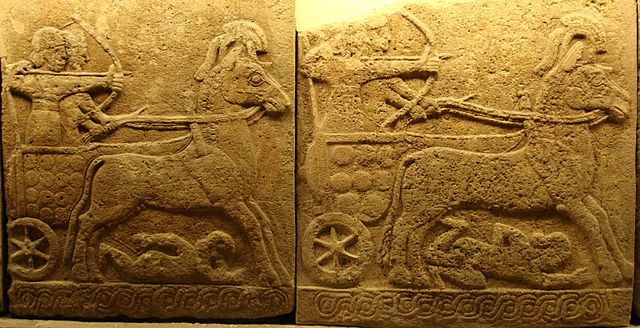
Atheist anti-theist Jonathan M. S. Pearce is the main writer on the blog, A Tippling Philosopher. His “About” page states: “Pearce is a philosopher, author, blogger, public speaker and teacher from Hampshire in the UK. He specialises in philosophy of religion, but likes to turn his hand to science, psychology, politics and anything involved in investigating reality.” His words will be in blue.
*****
I am responding to a portion of Pearce’s article, Exodus Sidebar: Replying to Armstrong about Camels (5-24-21). Pearce enlists Donald B. Redford, whom he describes as an “eminent Canadian Egyptologist and archaeologist” for his cause of biblical skepticism:
[A]nachronisms do indeed abound, robbing the book [Judges] of the credence one might have placed in it. Iron is common for chariots and implements (cf. Jud. 1:19; 4:3 13; cf. 1 Sam. 13:19-21), although historically it did not replace bronze until well into the monarchy. [Egypt, Canaan, and Israel In Ancient Times, Princeton University Press, 1992, p. 277]
Let’s look at those Bible passages (and another related one):
Joshua 17:16 (RSV) The tribe of Joseph said, “The hill country is not enough for us; yet all the Canaanites who dwell in the plain have chariots of iron, both those in Beth-she’an and its villages and those in the Valley of Jezreel.”
Judges 1:19 And the LORD was with Judah, and he took possession of the hill country, but he could not drive out the inhabitants of the plain, because they had chariots of iron.
Judges 4:2-3 And the LORD sold them into the hand of Jabin king of Canaan, who reigned in Hazor; the commander of his army was Sis’era, who dwelt in Haro’sheth-ha-goiim. [3] Then the people of Israel cried to the LORD for help; for he had nine hundred chariots of iron, and oppressed the people of Israel cruelly for twenty years.
Judges 4:13 Sis’era called out all his chariots, nine hundred chariots of iron, . . .
1 Samuel 13:19 . . . Now there was no smith to be found throughout all the land of Israel . . .
Redford seems to assume that “smith” in the latter passage presupposes work with iron, but historically, blacksmiths were not confined to working with iron. Wikipedia (“Blacksmith”; section, “Before the Iron Age”) noted that “During the Chalcolithic era and the Bronze Age, humans in the Mideast learned how to smelt, melt, cast, rivet, and (to a limited extent) forge copper and bronze.” So it’s not a foregone conclusion that “smiths” here is referring to a blacksmith who worked with iron; and even if this was the intent, note that it said there was no such person in Israel; the Philistines dominated the trade in the area (1 Sam 13:20). In 1 Samuel, in RSV, “iron” appears only once, referring to shekels (coins): in 17:7. The Hebrew word here, charash (Strong’s word #2796) is defined by the Brown-Driver-Briggs Lexicon as “worker in metal.”
Joshua, the successor of Moses, is thought by many to have lived in the 13th century BC, and this is the time of the “conquest” of Canaan by Israel. Judges 1:1 announces his death. I gave evidences from archaeology for these events in my papers, No Evidence for Joshua’s Conquest? (5-28-21), and Joshua’s Altar on Mt. Ebal: Findings of Recent Archaeology (7-22-14). This period is right at the end of the Bronze Age and the beginning of the Iron Age (1200 BC). I shall argue that iron chariots, or at least, iron-plated chariots, were indeed historically plausible in Canaan at this time. And this is the claim: that Israel’s enemies possessed them and were, therefore, difficult to defeat in battle.
The book of Judges (whether compiled later or not) deals with the historical period from approximately 1200 BC (again, the beginning of the Iron Age) to the appearance of Saul as Israel’s first king, around 1037-1010 BC: which event is dealt with in 1 Samuel. Thus, the first thing to recognize is that we are already in the Iron Age; thus, use of iron in chariots would seem to be at least possible, though perhaps not prevalent. Remember, the skeptical claim is that iron chariots in these passages are anachronisms, that ought not be there at all. They are supposed to be historically inaccurate.
But let’s examine this question a bit more detail, shall we? Is what Judges reports so far-fetched, and some kind of myth? Wikipedia (“Blacksmith”) noted:
The Hittites of Anatolia first discovered or developed the smelting of iron ores around 1500 BC. They seem to have maintained a near monopoly on the knowledge of iron production for several hundred years, but when their empire collapsed during the Eastern Mediterranean upheavals around 1200 BC, the knowledge seems to have escaped in all directions.
The empire of the Hittites (c. 1600-c. 1180 BC), as one educational article devoted to it explained, took up roughly the eastern half of Asia Minor (present-day Turkey) and extended into the Levant, down to the city of Byblos (present-day Lebanon / ancient Phoenicia), as a map of the empire illustrates. The same article stated:
The Hittite military made successful use of chariots. Although their civilization thrived during the Bronze Age, the Hittites were the forerunners of the Iron Age and were manufacturing iron artifacts from as early as the 14th century BCE. Correspondence with rulers from other empires reveal a foreign demand for iron goods.
Wikipedia (“Canaan”) is clear that the Hittites played a key role among the Canaanites. It observes:
Canaan had significant geopolitical importance in the Late Bronze Age Amarna period (14th century BC) as the area where the spheres of interest of the Egyptian, Hittite, Mitanni and Assyrian Empires converged.
This article mentions the Hittites 13 times. The book of Judges mentions them twice (1:26; 3:5). Its map of ancient Canaan overlaps the map of the Hittite Empire, with three cities north of Byblos.
Nathaniel L. Erb-Satullo, an archaeologist who specializes in ancient metallurgy, wrote the article, “The Innovation and Adoption of Iron in the Ancient Near East” (Journal of Archaeological Research volume 27, pp. 557–607 [2019]). He wrote in the Abstract:
Current evidence supports an Anatolian origin for extractive iron metallurgy on a limited scale sometime in the early 2nd millennium BC. However, the first major expansion of iron, both in Anatolia and across the wider Near East, occurred in the late second and early first millennium BC.
This exactly corresponds to the Hittites being in the forefront of iron production. We know that they had chariots (very good ones), and that they were part of the Canaanites. Everything fits into the scenario that the Bible describes. There is no anachronism here!
The Biblical Archaeology Society’s Bible Review (April 1990) included a fascinating little snippet: “Did the Canaanites Really Have Iron Chariots?” It noted:
As recently as 1983, one commentator [J. F. A. Sawyer] has told us, “It is historically highly improbable… that the Canaanites were equipped with iron chariots before the end of the second millennium B.C.”
But the archaeological evidence is clearly to the contrary. The biblical text does not require us to suppose that the Canaanite chariots were wholly iron, but only that they were strengthened with it, as several commentators have realized. But as the evidence in the accompanying article [link] shows, iron was sufficiently available in the Late Bronze Age to make iron-plated chariots plausible. . . .
It is noteworthy that after the Book of Judges, the Hebrew writers never again describe chariots of “iron.” Either the metal was later a normal component of a chariot and so did not deserve mention, or “iron chariots” were in fashion only for a short period, perhaps as an experimental weapon. In any event, the evidence indicates that there is no reason to conclude that the Canaanite chariots of iron are an anachronism inserted by a later editor.
Dr. Alan Millard, Professor Emeritus of Hebrew and Ancient Semitic languages, and Honorary Senior Fellow (Ancient Near East), at the School of Archaeology, Classics and Egyptology (SACE) in the University of Liverpool, wrote a book chapter in 1992 entitled, “Back to the Iron Bed: Og’s or Procrustes’?” In it, he contends:
Chariots wholly of iron are unlikely; a form of iron plating is the commonly accepted understanding of the Hebrew words in Joshua and Judges (Josh. xvii 16,18; Judg. i 19, iv 3,13). After noting the very lightweight construction of Late Bronze Age chariots found in Egypt, Drews asserted, “iron plating would have immediately collapsed the fragile and flimsy frame” and “an ‘iron plated’ chariot is thus technological nonsense”. Moreover, “nowhere in the ancient world, at any period, are iron plated chariots attested” ([n. 2], p. 18). Initially, the impracticality of iron-plated chariots seems a major objection, but it depends upon the amounts and the application of the iron. Small-scale fittings, holding the axles or hubs, would be insufficient to give a distinctive name to the chariots, so a visible covering of some sort is best envisaged. That it was wholesale plating is not so certain, or necessary. In the Late Bronze Age bronze scales were commonly sewn on to cloth or leather garments to protect men and horses, they even covered helmets, and there are administrative ac counts of “hides for the storehouses for the coats of mail (to equip) 20 war chariots”. Although iron scale armour is not attested until much later, in neo-Assyrian times, the possibility of an experiment with iron in the 13th or 12th centuries B.C. cannot be ruled out. Whether in plates or scales, the iron would add greatly to the weight of the chariots, as Drews emphasized, yet only in proportion to the amount applied. Three or four thin plates hung over the front to protect the charioteer’s legs, which his hauberk did not cover, might have been thought worth the extra load. Once the heavier chariots were moving, they would be hard for opponents, especially foot-soldiers, to withstand. In the relatively rough and uneven terrain of much of Canaan, even in the plains where the iron chariots were stationed, the opportunity for long, fast runs would be limited, unlike Egypt and parts of Syria. Thus iron chariots become intelligible in the contexts where Joshua and Judges place them, and the threat they would pose to the Israelites is seen to be great.
Moreover, we have the evidence of chariot use by the Hittites (against the Egyptians) from the Battle of Kadesh (at a site in present-day Syria, in the Levant), from 1274 BC, or some 74 years or so before the time under consideration, referred to in the book of Judges. According to the Wikipedia article on the topic:
[It] is the earliest pitched battle in recorded history for which details of tactics and formations are known. It is believed to have been the largest chariot battle ever fought, involving between 5,000 and 6,000 chariots in total. As a result of discovery of multiple Kadesh inscriptions and the Egyptian–Hittite peace treaty, it is the best documented battle in all of ancient history.
I couldn’t find anything specifically referencing iron or iron-plated chariots in this battle, but it is a quite reasonable surmise that it was involved, seeing that the Hittites were probably the foremost practitioners of the use of iron in the world at the time.
Lord Edwin E. Hitti’s article, “Hittite Chariots” adds additional fascinating insights, as to how iron might have created a better chariot:
The Hittites were not inventors of the chariot, but did make major modifications, developed and produced chariots in huge quantities. Specifically, by creating the six-spoke wheels for the chariots to make them lighter and faster, yet still durable . . .
The Hittite chariots had a box serving as a cab, with an axle passing beneath it, which held 2 six-spoke wheels. The six-spoke wheel was an innovation developed by them. Other contemporary chariots of the Hittites had eight spoke[s], . . . The six-spoke[s] allowed the chariots to move faster because the wheels were light. Thus, with speed and light wheels, it became maneuverable.
The Egyptian chariot placed the wheels in the back of the box, and only held two men, a charioteer and a warrior. The limitation was weight; with the wheels so far back, leverage placed most of the weight on the horses, thereby slowing them down.
The Hittite chariot, in contrast, placed the wheels farther forward under the center of the box, which put the weight of the warriors over the axle and took the strain off of the horses, This allowed three men to ride, the charioteer and two warriors, which in effect doubled the number of fighting men that could be deployed with the same number of chariots.
The Hittite war chariot was made with iron hub wheels; this made their war chariot stronger, faster, and longer lasting. Also, the warriors in the chariot were armed with superior weapons. Their iron tipped arrows had much greater penetrating power that the copper and bronze arrows of the Egyptians, who were the Hittites main rivals. The war chariot was sometimes equipped with iron swords on the hubs to cut opposing infantry units [Ben Hur-style!].
Likewise, James D. Muhly, Emeritus Professor of Asian and Middle Eastern Studies at the University of Pennsylvania, in his article, “How Iron Technology Changed the Ancient World and Gave the Philistines a Military Edge” (Biblical Archaeology Review, vol. 8:6, Nov/Dec 1982), states:
The actual use of iron must have been confined to fittings, such as the hubs of the chariot’s wheels, perhaps even parts of the wheel itself. (The same explanation probably applies to the iron bedstead of Og, king of Bashan, in Deuteronomy 3:11.) Such iron chariot fittings have been recovered at Taanach, but unfortunately in an uncertain archaeological context.
Thus, it looks like we have two viable theories as to the use of iron in Hittite chariots: either as plating and/or in parts of the wheels only. In both cases, the extra weight wouldn’t be so great as to be a hindrance to performance, but the iron would provide a distinct advantage. This would explain why the Israelites had trouble defeating their opponents with chariots that included iron in some capacity.
***
Related Reading
The Hittites: Atheist “DagoodS” Lies About Christian Apologists Supposedly Lying About How Biblical Critics Once Doubted Their Historical Existence [1-10-11, at Internet Archive]
Habitually “Lying” Christian Apologists?: 19th Century “Hittites Didn’t Exist” Radical Skepticism and Examination of Atheist DagoodS’ Replies and Charges [1-15-11, at Internet Archive]
Hittite Skeptics Chronicles, Part III: Specific Citations of Denial (Budge, Sumner, & Conder) and Biblical Historical Accuracy (in the Time of Elisha) [1-19-11, at Internet Archive]
Great Hittite Wars, Part IV: Lying Christian Egyptologist M. G. Kyle?: Atheist DagoodS Disputes Sir A. E. Wallis Budge’s Reported Hittite Skepticism [1-21-11, at Internet Archive]
“Higher” Hapless Haranguing of Hypothetical Hittites (19th C.) [7-7-20; abridgement of the four posts above]
***
Photo credit: Frank K. (8-12-08). Orthostat relief in basalt; battle chariot, Carchemish, 9th century BC; Late Hittite style with Assyrian influence. Reconstructed panel on the left, original on the right [Wikimedia Commons / Creative Commons Attribution 2.0 Generic license]
***
Summary: Critics of the Bible have attacked the mention of Canaanite iron chariots in Judges and Joshua, as alleged proof of historical inaccuracy and anachronism. I show how they are wrong.
***
Tags: alleged Bible contradictions, alleged biblical anachronisms, ancient Hebrews, ancient Israelites, ancient Jews, anti-theism, archaeology & the Bible, archaeology & the Old Testament, atheists & the Bible, Bible “contradictions”, Bible “difficulties”, Bible & History, biblical accuracy, biblical anachronisms, biblical archaelogy, Bronze Age, Canaanite iron chariots, Canaanites, Hebrews, Hittites, Holy Bible, infallibility, Iron Age, iron chariots, Judges & iron chariots, Late Bronze Age, Old Testament & history













